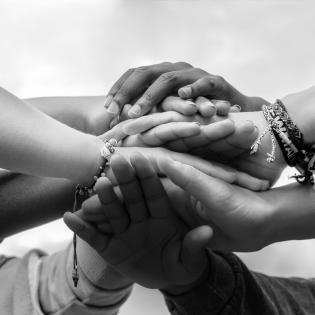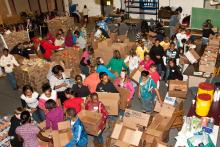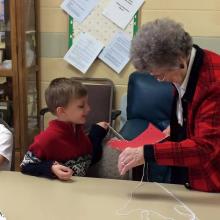The Four Types of Service Action
Four Types of Service
Young people who seek to address an issue they care about have many creative opportunities to consider. Exploring these four ways to take action is a starting point for critical thinking. It is important to include the people who are closest to the issue in the problem solving and critical thinking. Meaningful action aligns with the skillsets and needs of the group.
This guide helps youth explore ways to take action beyond the fundraiser or canned food drive. Service can look like acts of kindness, communicating about an area of concern, raising awareness, acting to benefit the common good, working with others to address social inequality, participating in a protest or march, or sharing knowledge through social media. It is helpful to think of the many ways to be philanthropic through four basic categories: direct action, indirect action, advocacy, research, or a combination of these.
Direct, Indirect, Advocacy and Research
- Direct Service is action that happens in the presence of the persons, animals, or places we want to impact. This may include volunteering for a nonprofit organization. Direct action may look like cleaning up a park, organizing an afterschool program, visiting people who are lonely, or bringing food to a family with a new baby.
- Indirect Service may not be in the presence of the person or thing you are impacting. Service might take the form of acts of kindness, organizing help after a storm, raising funds, bringing people together, or collecting needed resources.
- Advocacy is when you speak up for or against an issue or solution. We are being advocates when we communicate concerns, raise awareness, participate in a march, or share knowledge through social media. This guide has more about Advocacy.
- Research involves finding out new information that informs or demands action. For example, collecting scientific data or surveying a group.
More Ideas by Area of Interest
Learning to Give's Issue Area Toolkits provide many ideas for these four types of service. Below are just a few ideas to spark thinking.
Kindness
Sample types of action for building a culture of kindness
Direct: Craft bracelets or pins with inspirational quotes and give them to people in the community that may need support
Indirect: Organize a collection drive to ask neighbors and school families to donate supplies or gifts for a family that has recently experienced a loss.
Advocacy: Call attention to problems related to cyber-bullying and ask that the school or community offer anti-bullying training.
Research: Research state and national laws on cyber-bullying. Share the current legislature and data with the school and community to create more advocacy.
Environmental Stewardship
Sample types of action for the environment
Direct: Build birdhouses in collaboration with the local nature center to attract a bird whose home is threatened.
Indirect: Organize a collection drive to ask neighbors and school families to donate garden supplies for a community garden.
Advocacy: Hold a community information night to inform neighbors about the importance of reducing invasive species.
Research: Take water samples and participate in species count days. Share research data about the health of a site in order to ask the community to take action.
Intergenerational Relationships
Sample types of action for building intergenerational relationships
Direct: Partner with a local senior living community or senior center (or daycare center). Youth could host a game night, read together, or participate in one-on-one conversations.
Indirect: Organize a collection drive to ask neighbors and school families to donate books, magazines, equipment or other items to a local retirement community or a daycare.
Advocacy: Hold a community information night to inform community members about the needs of seniors in the community. Try to coordinate ways to get them the help they need.
Research: Research the best energy practices and learn what minor changes people can do to reduce costs and increase efficiency. Share this information with seniors in the community.
Identify solutions and take action with the community where youth have identified a need.
Connect to the people who are closest to the issue. This helps youth understand the context and purpose as they design their service together. Involve neighbors in identifying solutions and taking action that works. Remember, the community isn't just your local neighborhood; a community can be as small as a group of people and as large as the world!



